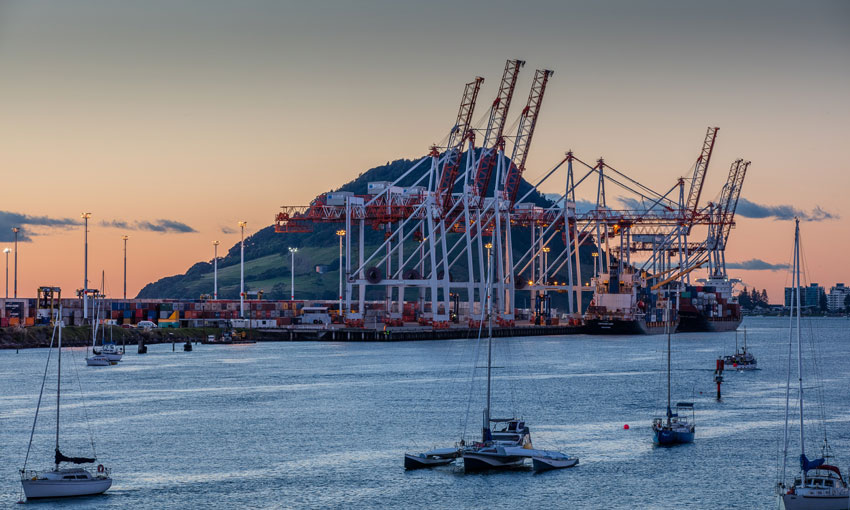PORT of Tauranga has reported an increase in revenue and profit for the 2023 financial year despite cargo volumes falling in the second half.
The North Island port posted a group NPAT of NZ$117.1 million, which was a 5.2% increase on that of the previous year.
Its full-year revenue was NZ$420.9 million, a 12.2% increase year-on-year.
But total cargo volumes decreased 3.6% in that period to 24.7 million tonnes, and container volumes fell 5.1% to 1.18 million TEU.
Port of Tauranga attributed the lower cargo volumes to the impacts of extreme weather in the second half of the financial year. The port was not damaged, but North Island transport networks were disrupted.
In March 2023, New Zealand ports reinstated proforma berthing windows following extreme congestion since late 2020. Prior to March, more than two thirds of vessels arriving at Tauranga were off schedule.
Port of Tauranga chair Julia Hoare said it was a year of two halves.
She said results in the first half of the financial year were assisted by an increase in container transhipment, as well as the return of cruise ships over the summer.
“The improvement in vessel schedule integrity is helping productivity return to normal levels,” Ms Hoare said.
Despite the current cargo slowdown, she said Port of Tauranga continued to invest in critical infrastructure to deliver an effective supply chain for New Zealand.
Port of Tauranga expects new business opportunities from this month’s opening of the Ruakura Inland Port in Hamilton, a joint venture with Tainui Group Holdings.
“The new facility is a game changer for the upper North Island supply chain and unlocks efficient and lower carbon pathways to international markets for Waikato-based importers and exporters,” Ms Hoare said.
The new inland port and Port of Tauranga’s existing facility, MetroPort Auckland, are connected by rail to the Tauranga Container Terminal.
Port of Tauranga said it is seeking resource consent to construct a new vessel berth of up to 385 metres at the container terminal.
The new berth would convert existing cargo storage land, accommodating the continuing trend to bigger container vessels. All proposed development is within the current operational port footprint.
The company’s resource consent application was heard in the Environment Court in March and a decision is pending.
“The resource consenting process is complex, time-consuming and costly for all parties involved. We are hopeful of an imminent resolution,” Ms Hoare said.
Port of Tauranga considers the extension is considered critical to the New Zealand economy.
“This project is an essential piece of national infrastructure. The catastrophic weather events of 2023 have demonstrated that New Zealand is in need of greater resilience and capacity in the national supply chain,” Ms Hoare said.
Port of Tauranga chief executive Leonard Sampson said the port’s diversity of cargo and long-term freight agreements with key customers had helped the company stay resilient in challenging economic conditions.
“There’s no doubt that we’re seeing both a reduction in imported volumes and a slower global economy,” Mr Sampson said.
“However, key export commodity volumes remained strong over the past 12 months, with the slowdown in import container volumes providing some breathing space after an erratic couple of years.”
Port of Tauranga noted it has taken delivery of a new pilot launch, the Troy Evans, and has four new hybrid straddle carriers on order for delivery late in 2023.
It said a new container crane is due to arrive in January 2024 to replace the oldest crane in the fleet, which has been decommissioned over the past few months.





